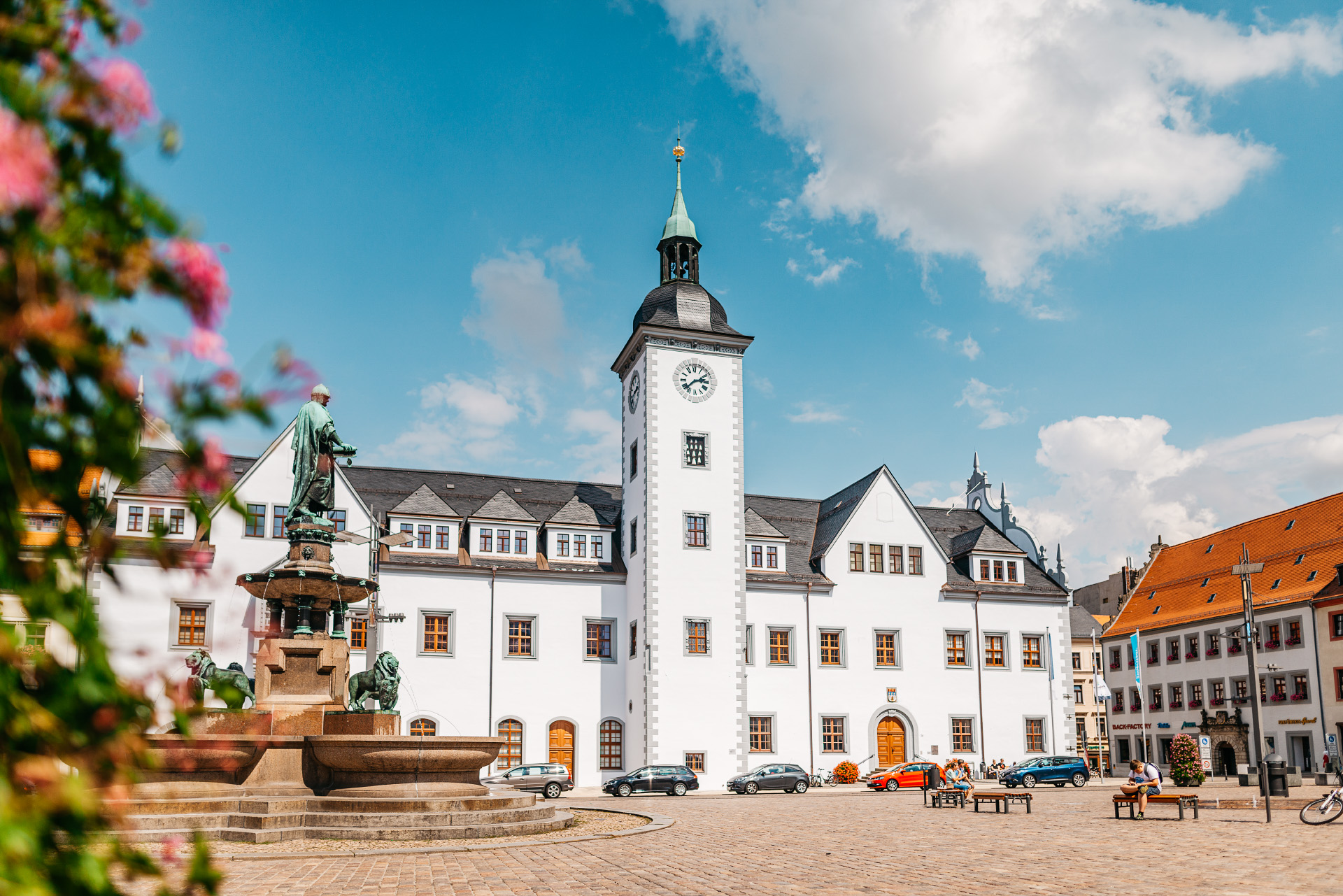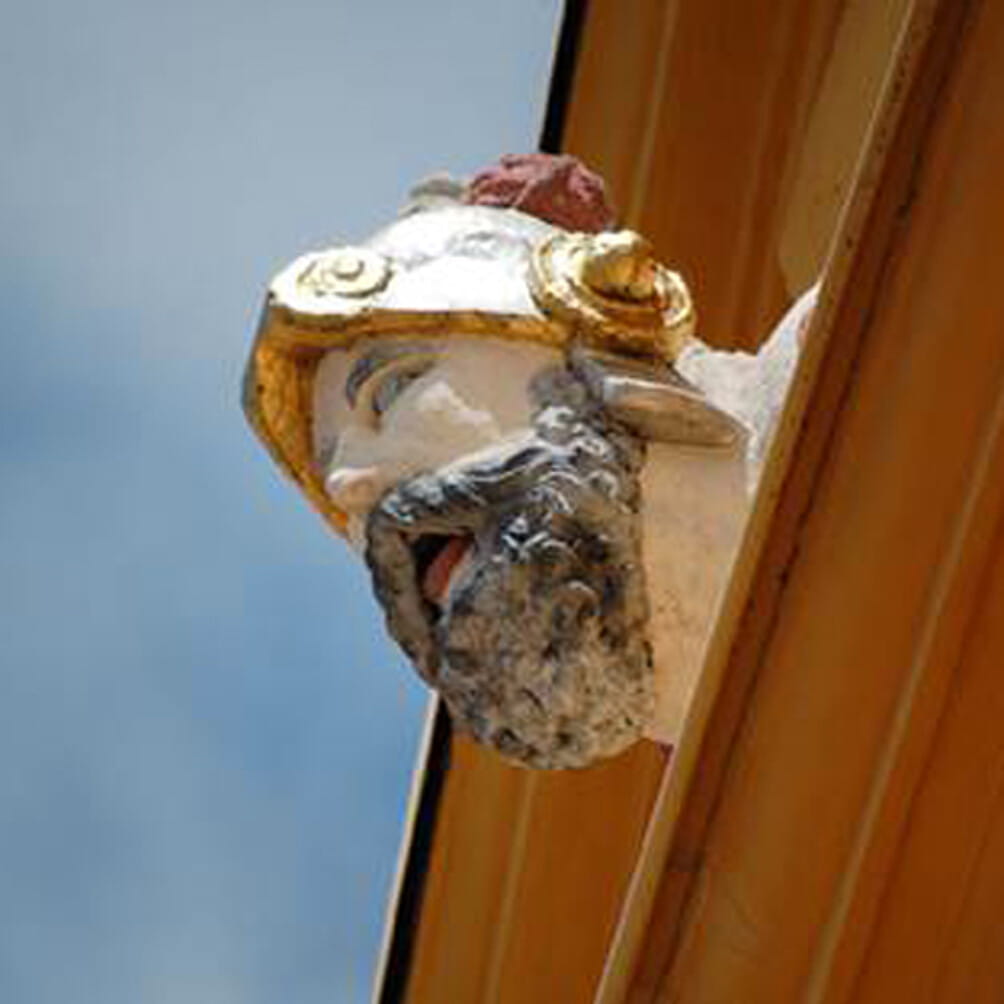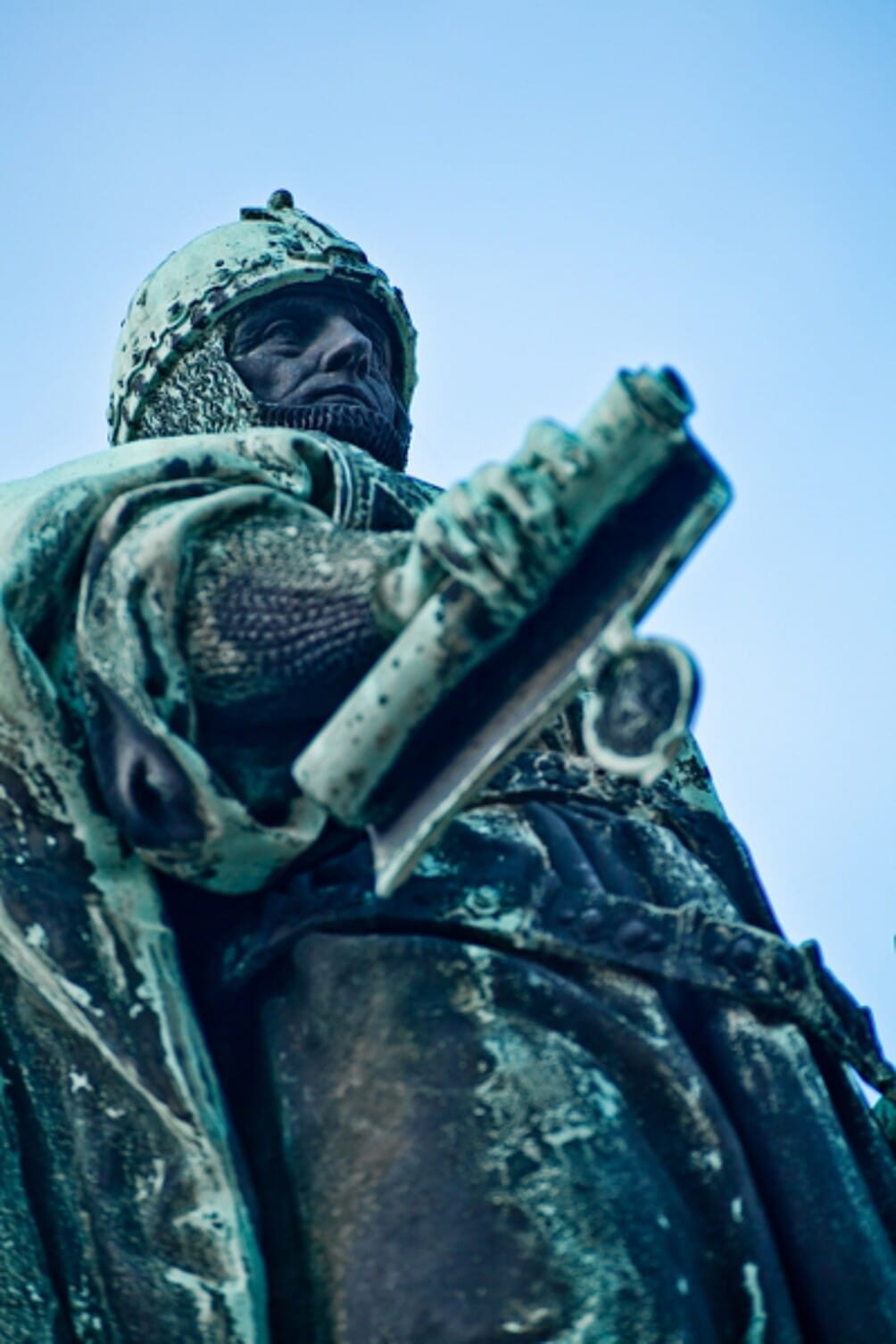The historic Upper Market (Obermarkt( is one of the most beautiful market squares in Germany. Established between 1210 and 1217 during the uptown (Oberstadt) planings the market also covered the Church St. Petri. After the fire 1484, the upper market and the Petri market were seperated by a row of houses.
It is now lined with late Gothic patrician houses with traditional steep pitched high roofs flanking the imposing 15th century Freiberg town hall. The whole historical place is preserved. The town hall from 1410 dominates the medieval place on the north east side. Special attention is paid to the tower: in the first floor there is a tower clock and the St. Lorenz Chapel, furthermore there is a chime made of Dresden china. You can listen to the minors´ song "Glück auf, der Steiger kommt" daily at 11:15am and 4:15pm.
Guided Tours through the historic Town Hall Cellar
You can preebook guided tours through the historic town hall cellar where Knight Kunz von Kaufungen died and robber captain Lips Tulian was arrested. Please contact the tourist information for prebookings – tours are only available by appointment.
The Dresden china chime
The bells chime daily at 11:15am and 4:15pm. Because of these times the church bells and the chime do not interfere with each other.
The chime was made and installed in 1986 by the company Ferner, a special workshop for tower clocks, from Meissen fort he 800th anniversary of the city of Freiberg. The twelve bells made of Dresden china let the minors´ song "Glück auf, der Steiger kommt" sound. In addition to the automatic control, the electromagnetic musical mechanism can also be played by hand using a button keyboard.
Contact Town Hall Cellar Tours
Tourist-Information Silberstadt Freiberg
Schloßplatz 6
09599 Freiberg
Tel.: +49 (0) 3731 273 664
Fax: +49 (0) 3731 273 665
E-Mail: tourist-info@freiberg.de
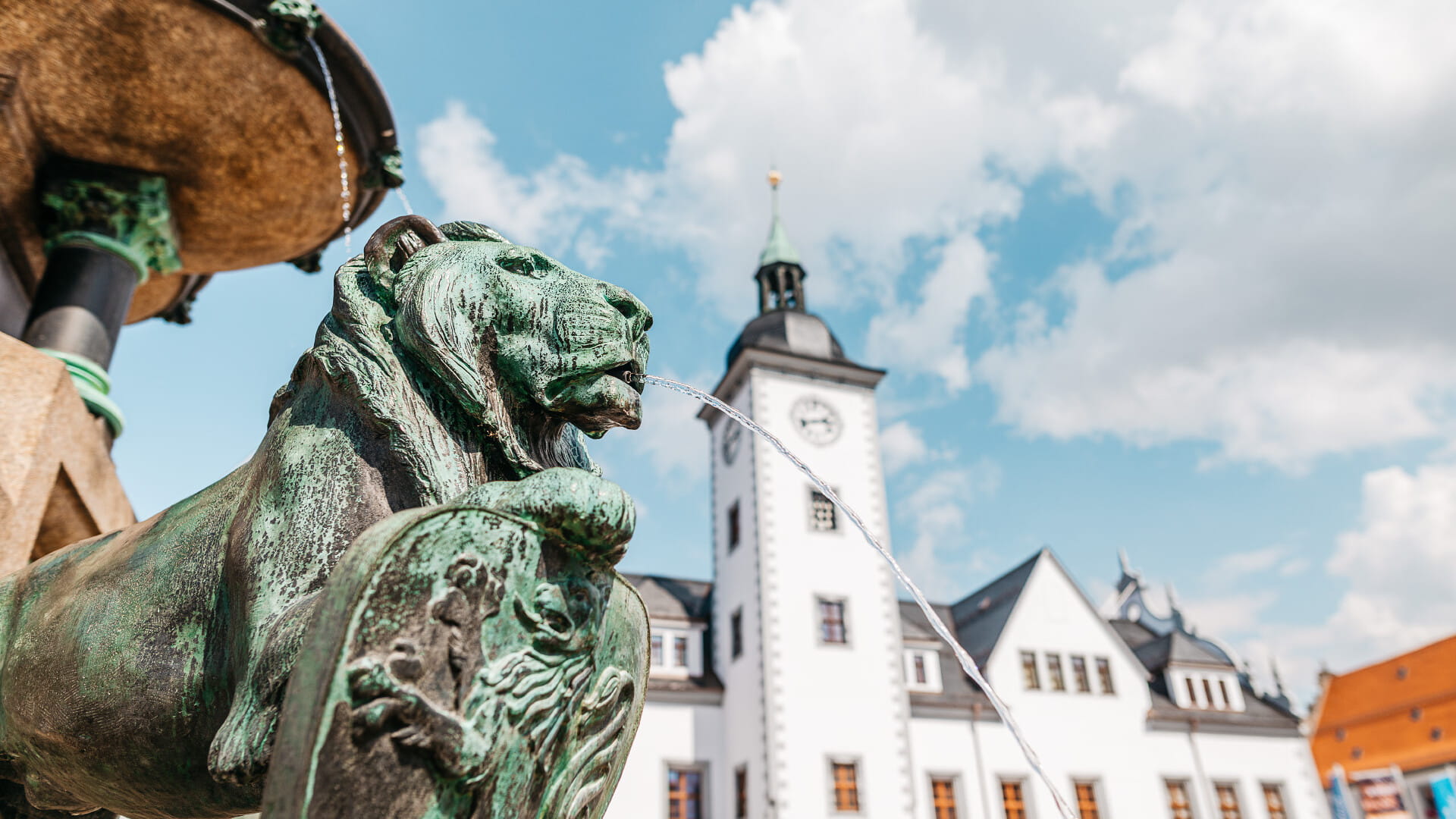
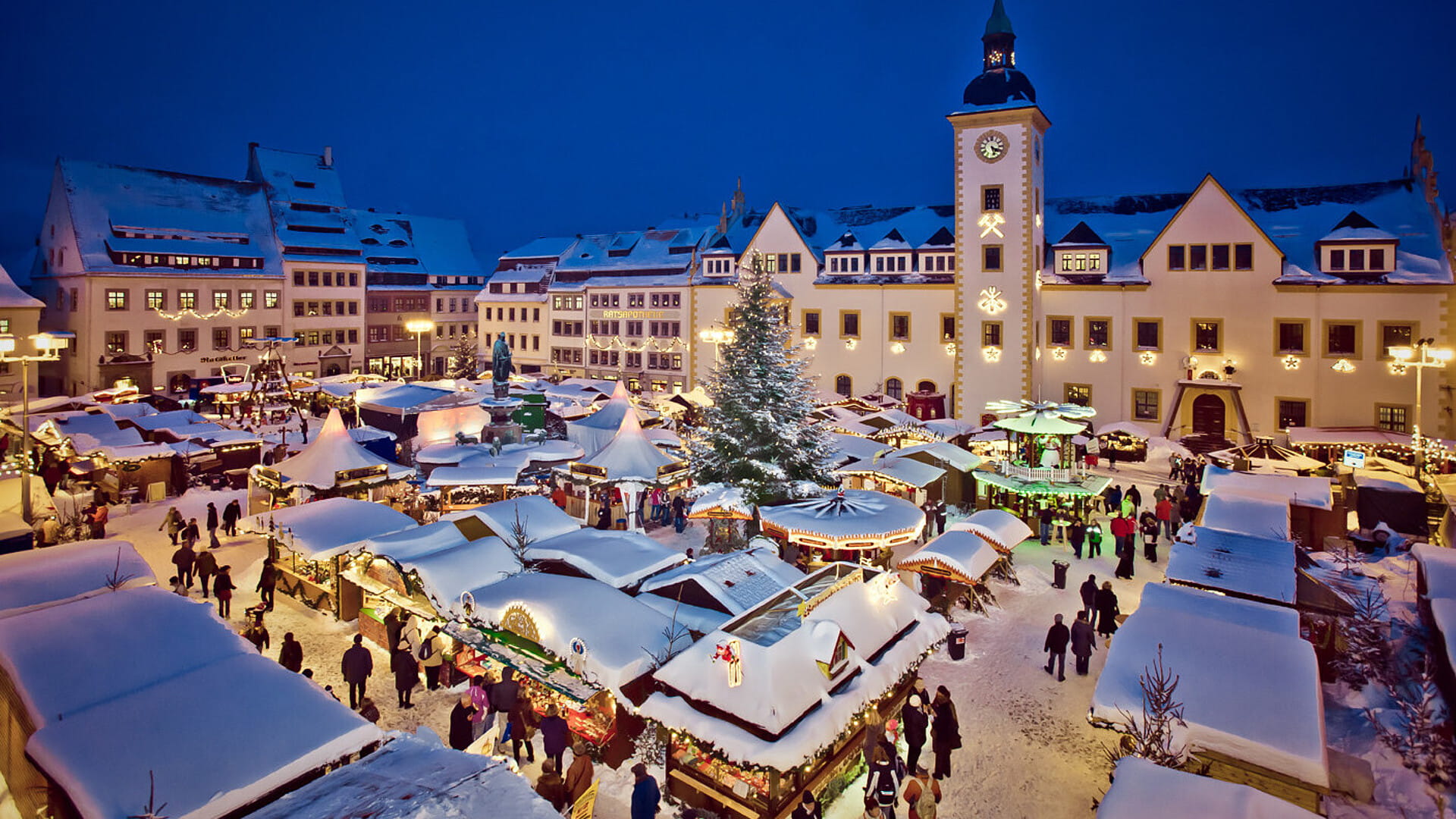
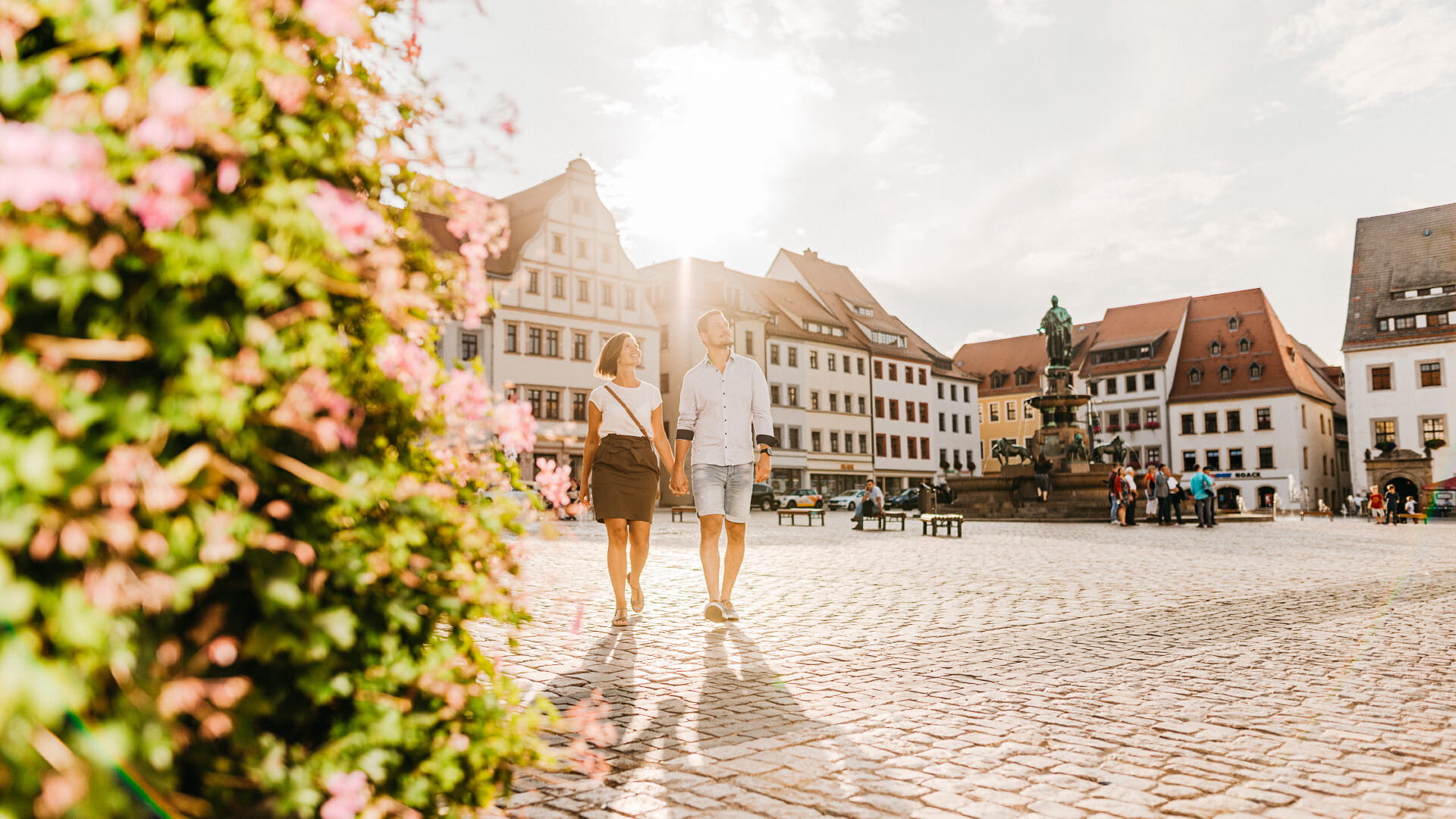
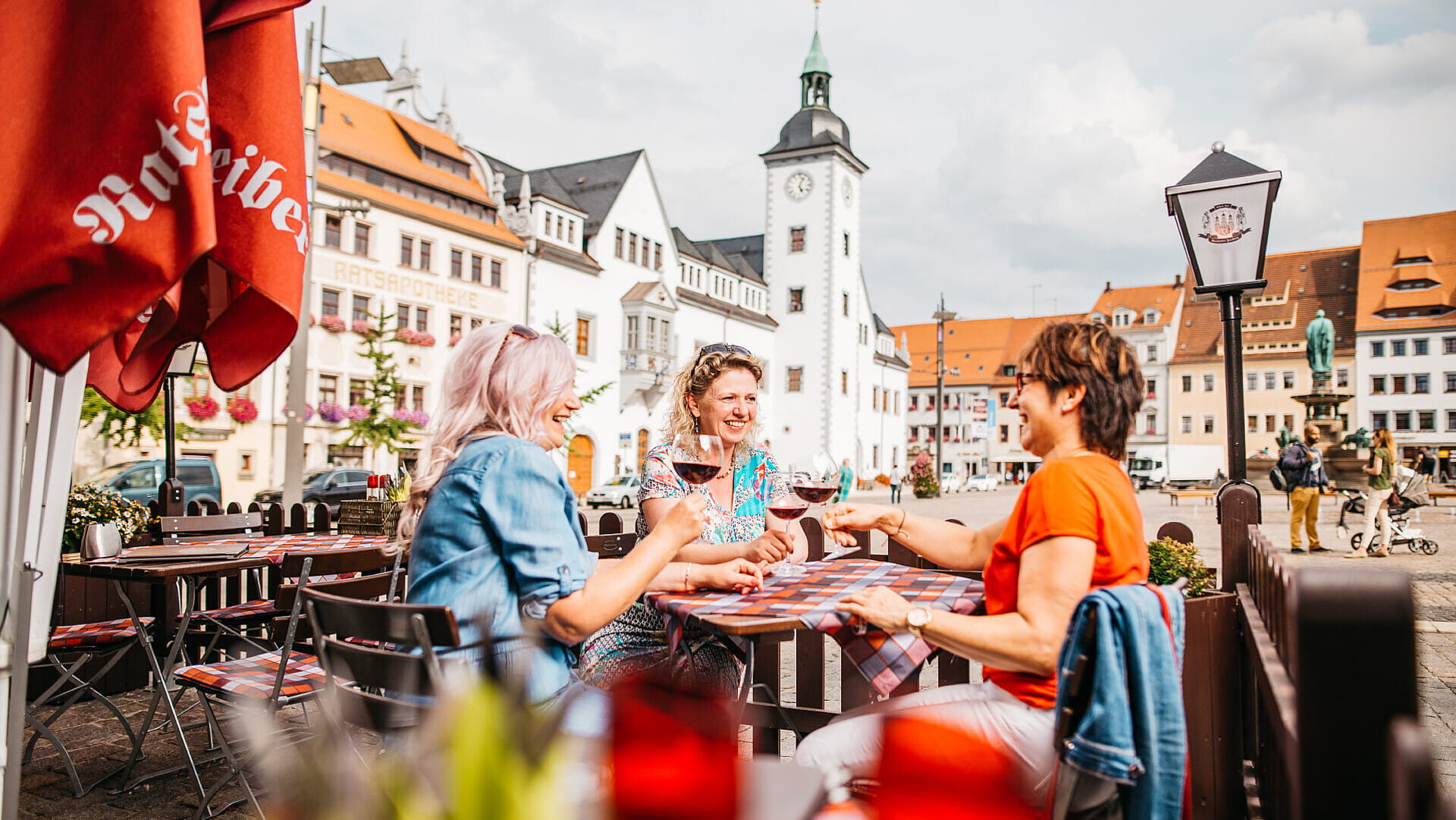
The history of the town hall
The history of the town hall
The history of the town hall
The late Gothic town hall is one of the most valuable secular buildings in Freiberg's historic Old Town and is the eastern dominant feature of the Obermarkt. The first Freiberg town hall was built on the same site as early as the 13th century. It is referred to in the town law book (1296 - 1305) as Dinghaus. The term town hall first appeared in 1407. In the Middle Ages, the ground floor vaults housed the council scales and the bread banks. In the 17th century, the salt and cloth benches and other sales outlets were added. From 1410 to 1416, major building work was carried out on the town hall as a result of severe damage caused by the town fires of 1375 and 1386.
Town hall tower on the west side built between 1429 and 1442
Town hall tower on the west side built between 1429 and 1442
During the reign of Mayor Weller von Molsdorf, the tower that still exists today was built on the west side of the town hall between 1429 and 1442. Between 1470 and 1474, a new building was erected in the form of an elongated, rectangular, two-storey building, which was decisive for its current appearance. But the following centuries also left their mark on the building. Evidence of these changes are, among other things, the many differently shaped window jambs. In 1618, the tower on the west side of the house was raised. The gothic pitched roof was replaced in 1857, against the opposition of many Freiberg citizens (including Prof. E. Heuchler), by the low gable roof that still exists today. The historicist Renaissance gables also date from this time. The dwarf houses and the roof extensions were added in 1920.
Bay window emphasises market front
Bay window emphasises market front
The market front of the town hall is accentuated by the square tower in front and the oriel created in 1578 by the council stonemason Andreas Lorentz. The oriel is decorated with the Saxon coat of arms, the Meissen coat of arms, the Hessian-Thuringian coat of arms, the Freiberg coat of arms and the Danish coat of arms. The head of an armoured man, who is interpreted as Kunz von Kauffungen, looks out of the gable of the oriel. Next to this large bay window was a smaller one built around 1602, which was demolished in 1831. The main portal with its simple forms dates from 1775. The tower-like risalit at the back of the town hall was built in 1672 to replace the original round tower.
Interior of the town hall largely changed
Interior of the town hall largely changed
The interior of the town hall has been largely altered. In the hallway of the upper floor, three pointed arched arcades on chamfered pillars still exist, reflecting only a small part of the former council hall, which was originally twice as long (6 arcades) and stretched across the entire width of the building. The upper floor also contains the former Council Room (now the Council Chamber) with a Gothic beamed ceiling refurbished in 1876, the Historic Council Archives and the former Commission Room (now the Council Meeting Room). Originally, the square, cross-vaulted room of the council archives (entrance in the council hall) served as the council chamber or silver chamber.
Council archive in former silver chamber
Council archive in former silver chamber
In 1632, the dangers of the 30 Years' War prompted the council to house the council archives in this fire- and theft-proof chamber. The so-called chamber boxes, which are still used today, were made in 1635 to store the archives. In the south-western corner of the upper floor, the commission room was furnished with a shallow vaulted ceiling. This room is also decorated with a cupboard and a portal with an original door from 1691.
The St. Lawrence Chapel
The St. Lawrence Chapel
The St. Lawrence Chapel Chapel in the tower is an architectural gem. This was the entrance to the council hall, which was reached through the portal. Around 1510, the room, which was originally open on its west and south sides, was closed off, painted and converted into a chapel, which was consecrated to St. Lawrence in 1513/14. The St. Lawrence Chapel is adorned with a multi-panelled interior portal surrounded by a tendril work with lilies. This room is crowned by a graceful, painted star vault. Between 1983 and 1993, wall paintings from the time when the chapel was built were uncovered and restored. They show the martyrdom of St. Lawrence, Christ as the judge of the world and the fight of St. George with the dragon.
Historic Town Hall Cellar
Historic Town Hall Cellar
The barrel-vaulted cellars of the town hall, some of which were used as dungeon cells, date back to the Middle Ages. The prince robber Kunz von Kauffungen sat in one of these cells before his execution on the Obermarkt on 14 July 1455, as did robber chief Lips Tulian.
The significance of the three crosses on the southwest corner of the town hall, two of which are lined with ore, is not exactly known. They were certainly erected out of religious motivation. Since time immemorial, they have been interpreted as the actual landmarks of the town.
Originally, the building of the town fortress, the so-called Stockhaus (town prison), was not part of the town hall. In 1912 it was demolished and replaced by a new building that now belonged to the town hall.
The Freiberg town hall has been rebuilt, altered and repaired several times in its centuries-old history. The last major renovation took place in 1997 - 2000. Modern facilities such as a lift for the disabled were integrated into the listed building and parts of the valuable historical furnishings were restored.
Der Upper Market (Obermarkt) 16
The Ratskeller restaurant has been located in Obermarkt 16 since 1880. The building on the north-west front of the square was built in 1545/1546 by Sebastian Lorenz the Elder as a municipal department stores'. The municipal banqueting hall from 1687 is also located in this building. The hall was redecorated in the Baroque style at the beginning of the 18th century. Clara Schumann gave concerts here in 1834 and 1836.
Freiberg's lion heart
The bronze fountain monument from 1897 stands in the middle of the Upper Market (Obermarkt) and depicts the Wettin founder of the city, Margrave Otto the Rich, and four heraldic lions. Many of Freiberg's events take place around the fountain - whether it's the Christmas market or the Bergstadtfest. The Obermarkt has always been a kind of "parlour" for the city. This is where the weekly markets are held, where people meet in large or small groups and where you can best start your adventure tour through Freiberg's past and present.
The Obermarkt is also a very special place for Freiberg's living mining tradition - the large, traditional mining parades take place here in summer for the Bergstadtfest (Mining Town Festival) and in winter for the Ore Mountain Christmas Market. An unforgettable and unique experience for all Freibergers as well as Freiberg's guests!

